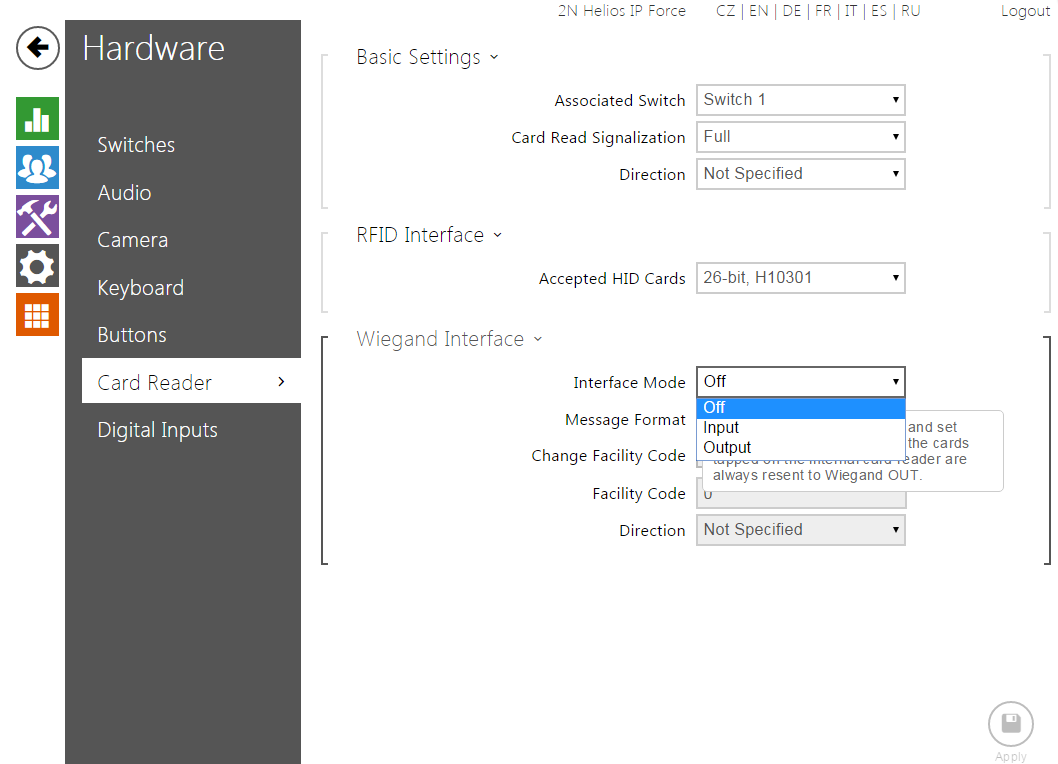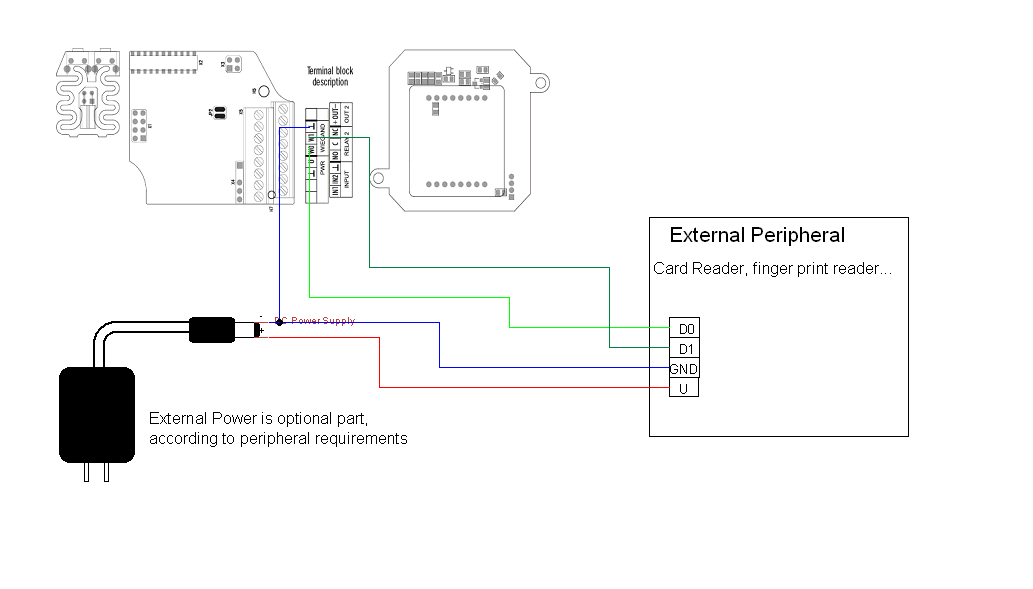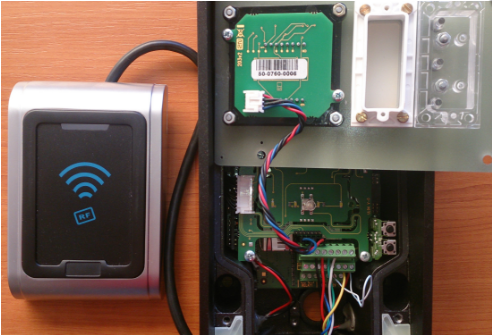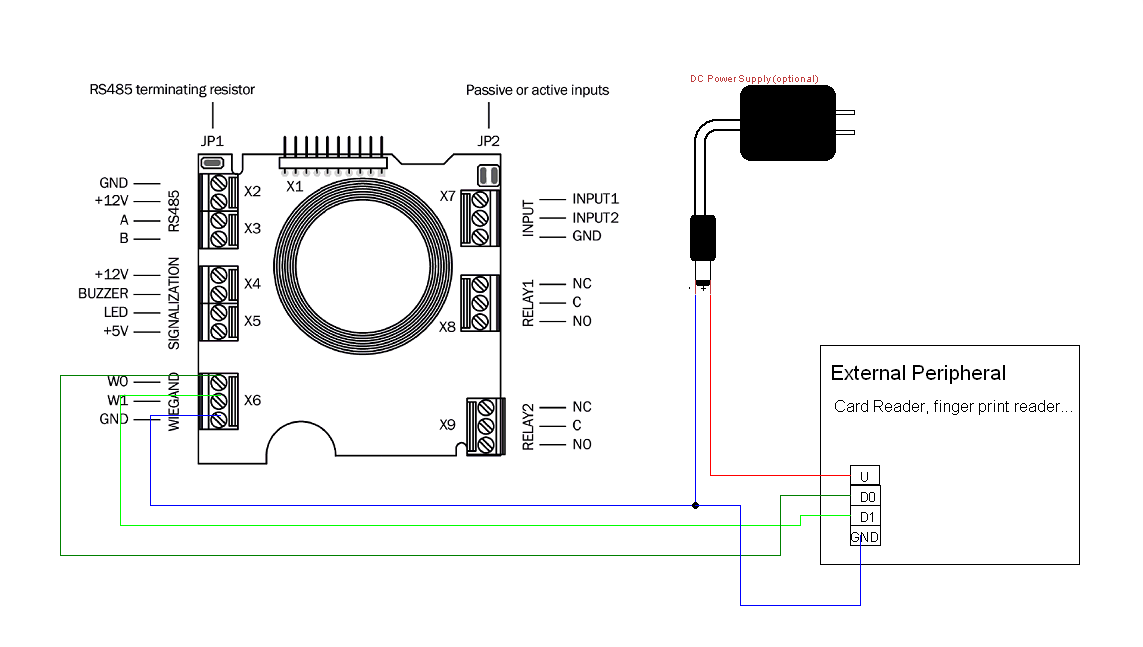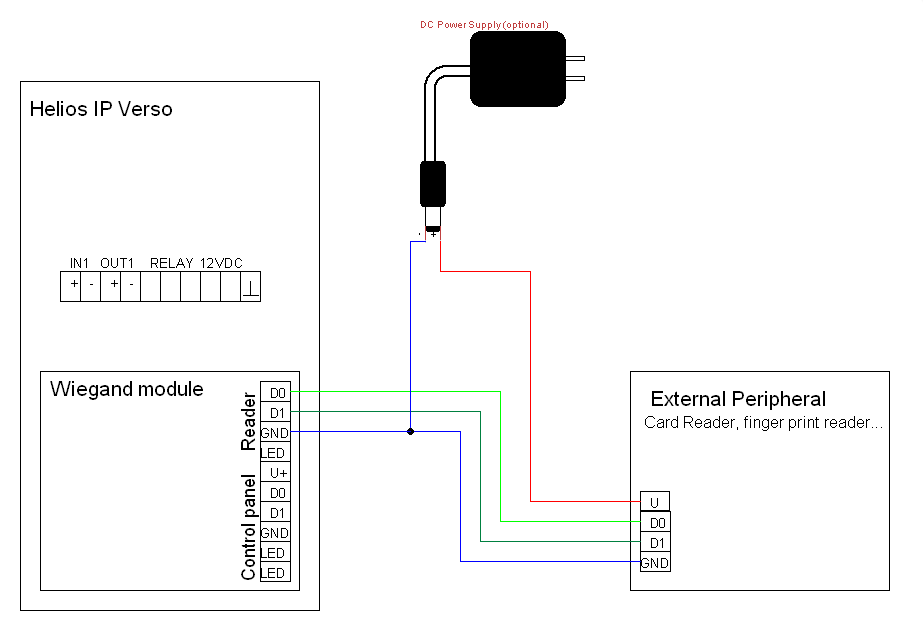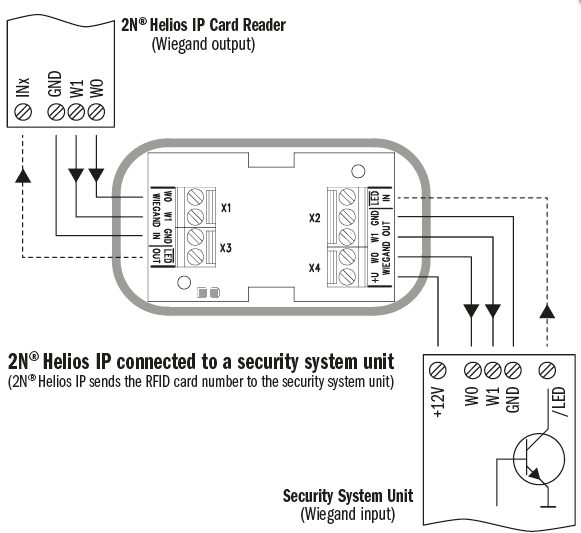2N IP Intercoms - Wiegand interface
Wiegand overview
Wiegand interfaces is generally used for interconnecting peripherals such as external RFID card reader, finger print reader. iris recognisition, etc. with any main unit in our case (in Helios IP interco). Wiegand interfaces uses three wires in physical layer. Fisrt wire is ground (GND), second is usually called Data0, Data low or D0. The last one is called Data1, Data high od D1. When no data is sending, both Data wires is pull up tu high voltage - usually 5V. When bit=0 is sending, the D0 is pulled to low voltage for a specific time and D1 stays on high. On the other way when bit=1 has been send, then D1 is pulled to low voltage and D0 stays on high. The longest possible distance connecting devices via this interface is usually about 150m (but it can be also more).
Wiegand protocol (Wiegand messages)
Wiegand messages are very often called Wiegand 26, because this massage is 26 bits long. It contains 8 bits of facility code and 16 bits of ID code. The message starts with a parity bit calculated from first 12 bits and ends with the second partity bit that is calculated from last 12 bits. Parity bits are calculated with reversal mutual logic. There are more Wiegand specifics protocol depending on the message length (Wiegand 32-bits, Wiegand 37-bits).
Wiegand in 2N® IP Force/Safty
Both internal RFID card readers (125kHz and 13.56 MHz) have one Wiegand interface. There is a limited functionality in 2N® IP Safety. This extending module on 2N® IP Safety with RFID Card reader can´t be used as an internal RFID Card reader in Helios IP Safety because of the metallic body without any plastic window possibility. This module can be use only as the extending modul with Wiegand interface and additional input and ouputs that can be connected with some external facility. More information about extending modules can be found here: 2.4 Extending Module Connection. This Wiegand interfaces can be switched into Input or Output mode. It´s possible to change Message format. There are three predefined specification 26b, 32b and 37-bits of Wiegand message or you can set it in a Raw mode.
In the 2N® IP Force device you need to choose direction of the communication in the configuration web interface. More information about configuration can be find on 5.3.8 Card Reader.
Basic schematic of interconnecting 2N® IP Force and some peripheral:
Wiring example you can find in the picture below:
- RED - DC +12V
- BLACK - GND
- GREEN - D0
- WHITE - D1
- BLUE - LED
- YELLOW - Buzzer
Wiegand in 2N® IP Vario
2N® IP Vario needs internal RFID Card reader for connecting external facility via Wigand interface. For 2N® IP Vario connect the external card reader according the picture below.
Red wire is connected to signalization bus providing external card reader with +12 V power. If you use external power supply, you do not have to connect this cable. More information can be found in our FAQ: Wiegand - External RFID card reader 125kHz/13.56MHz - How to connect it to 2N IP Intercom?
In the 2N® IP Vario device you need to choose direction of the communication in the configuration web interface:
Basic schematic of interconnecting In the 2N® IP Vario and some peripheral:
Wiegand in 2N® IP Verso
2N® IP Verso can be equipped with extending Wiegand module. This modul contains one Wiegand output and one Wiegand input interface (table bellow). More information can be found in: 2.4 Extending Module Connection - Wiegand Module. Configuration of the extending Wiegand module can be found in the Configuration manual in Extenders section (5.3.10 Extenders). All the inputs and outputs are galvanically isolated from the 2N® IP Verso system with insulation strength of 500V DC.
Basic schematics of interconnecting 2N® IP Verso with some peripheral.
| Reader | W0 | Isolated 2-wire WIEGAND IN |
LED | Isolated open LED OUT switched against GND | |
| Control Panel | +U IN | +UIN (5 to 15 V DC) WIEGAND OUT power supply input |
W0 OUT, W1 OUT, GND2 | Isolated 2-wire WIEGAND OUT | |
LED IN (negated) | Isolated input for open LED IN, input activated by GND2 | |
LED IN | Isolated input for open LED IN, input activated by +U | |
| G |
| |
| TAMPER | Tamper switch (Part No. 9155038) input |
2N® IP Wiegand Isolator
The 2N® IP Wiegand Isolator (Part No. 9159011) is used for galvanic isolation of the Wiegand bus. This device can prevent communication error and protect both communicating device. More information can be found in: 2.5 Extending Module Connection / Wiegand isolator

